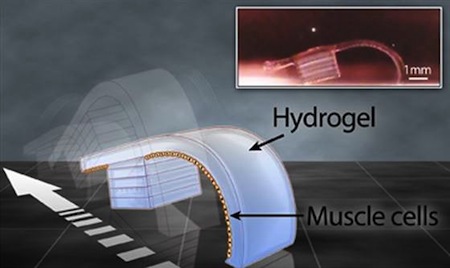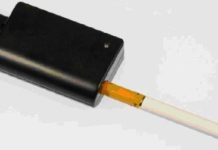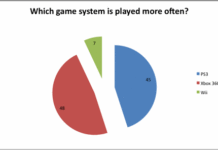Rats are often thought of as a scourge of the world spreading disease and fear. Though you may think rats are serious problem, their cells could actually be used for good. A scientist team led by Dr. Rashid Bashir, a professor of Electrical and Computer Engineering & Bioengineering a the University of Illinois, has engineered a biological machine that is entirely powered by Rat Heart Cells. With this new technology scientists can make advances in medical diagnosis, toxin control, and environmental cleanup. They are known as bio-bots!
A bio-bot is a tiny robot made of rat heart cells and polymer. It is a technically advanced machine that does not use electricity. The bio-bot is a quarter-inch long or one millimeter machine that can be modified to combat different problems that come up. They are capable of moving without electrical energy thanks to the rat heart cells. The quarter-inch long robot is able to crawl through your body and target diseases that can harm you.
“Our goal is to see if we can get this thing to move toward chemical gradients, so we could eventually design something that can look for a specific problem and the try to fix it,” explains Bashir. Meaning the bio-bot will be attracted to chemical toxins or poison and move to neutralized it.
“Our bio bot moves by actuating the legs via contraction of the cardiac [rat heart] cells that are plated on the legs,” said Bashir in an email to SciJourner. “The cardiac cells beat and move the legs and the one long leg in the picture touches the surface such that the adhesion changes between the front leg and the back leg. This results in the movement of the bio-bot.”
Bio-Bots are made from scratch on a 3-D printer using hydro gel—a soft cousin of polymer— and the material used to make contacts. The 3-D printer is a more complicated version a regular printer you use every day. This printer allows people to print 3-D versions of your work in real life-like action figures and pizza, too! According to Wikipedia, “3-D printing is made by using an additive process, where successive layers of material are laid down in different figures to make something.” Nextweb.com explains that this technology perfectly replicates simple objects by dispensing materials other than ink onto moving platforms. The printer follows a computed design and layers the material until the design creates the object. This is how the Bio-Bots are made.
Bashir quotes, “The gel is then sprayed with Rat Heart Cells. After a few days the cells synchronize and beat spontaneously.”
By changing the design of the bio-bot, scientists can tackle different problems. This means that the 3-D printer is able to alter the design of the bio-bot easily to change the way it can solve each problem.
Anakin Montgomery and Cameron Maddox

This work is licensed under a Creative Commons Attribution-NonCommercial-NoDerivs 3.0 Unported License














:smile Good job Anakin and Cameron!! Your hard work all year paid off:-)
Good Job. i didnt know that was possible.:gamba
good information and a really great topic
I didn’t know that rat heart cells can be a great use. Also that you can make a tiny robot from the heart cell. This is great information.
I think that this would be a very good idea to go with…
:smile :flag :shy :arhh :yes :good :huh :gamba :why :shh :zzz :cried :wuwu :invite :sweat :wah :@@ :ak :erm :congrate